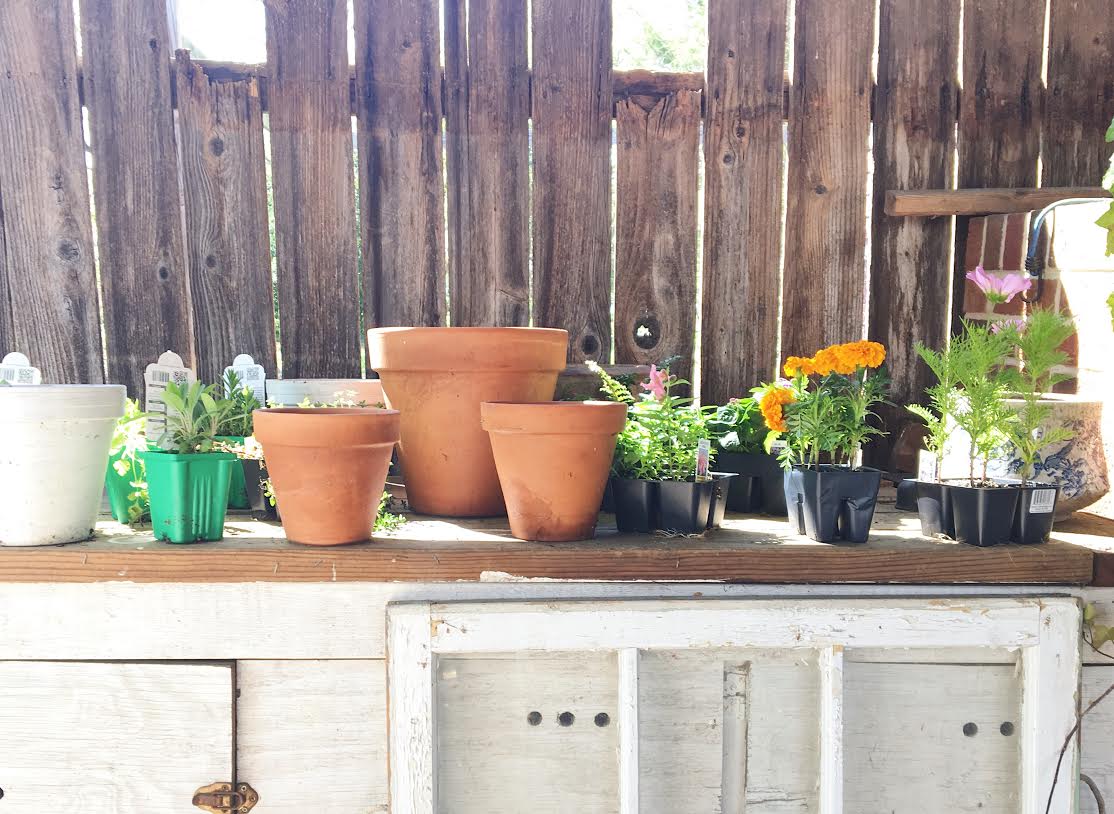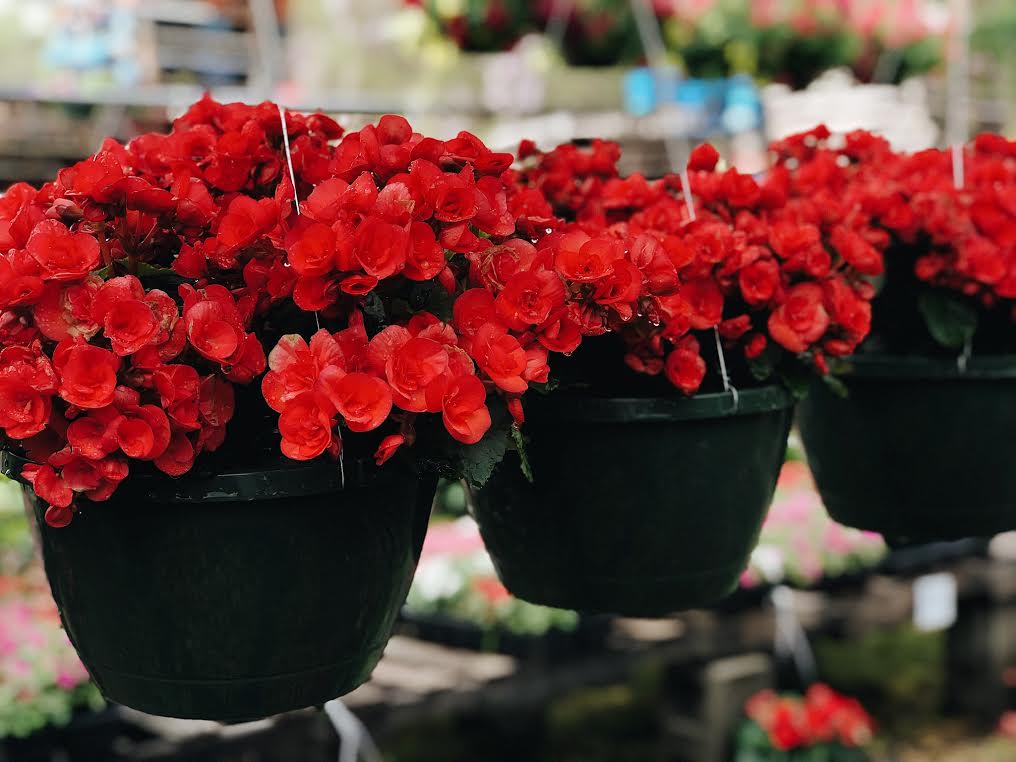
B L O G
How To Care For Verbena And Keep It Thriving
If you’re looking for an easy, annual flowering plant that’s not fussy, drought tolerant, and attracts butterflies, Verbena is a great choice for you! With a variety of vibrant colors and soft leaves, these flowers are the perfect addition to any of your baskets, window boxes, or gardens.
If you’re looking for an easy, annual flowering plant that’s not fussy, drought tolerant, and attracts butterflies, Verbena is a great choice for you! With a variety of vibrant colors and soft leaves, these flowers are the perfect addition to any of your baskets, window boxes, or gardens.
HOW TO CARE FOR VERBENA
The best thing about Verbena is that that aren’t picky. In fact, the most common cause of their downfall is too much attention, aka over-watering and over-feeding them. Follow these tips, and you’ll be just fine!
Where to Grow.
Plant in the sunniest place possible. These beauties LOVE the sun (need at least 8 hours of direct sunlight), and are able to withstand the heat. Be sure to plant them in a sunny place that will help them bloom and thrive.
When and How to Plant.
The best time to plant your verbena would be in the spring, however, you can plant in the summer if special attention is paid to them while they are still establishing.
Remember to plant at least 6 inches apart to increase the air circulation. Water at least two times per week while the plant is still establishing itself into the soil.
Soil.
Verbena needs well-draining soil. That’s what makes them PERFECT for a rock garden, but obviously you can plant anywhere. If you’re planting in a garden or mixed container, be sure to plant in a mound formation in order to encourage adequate circulation.
Watering.
The best way to water your verbena is to inspect it every day. If the leaves look limp, then that’s a sign that it’s time to water. They only require about an inch of water a week, but during scorching hot weather, they might need a little bit of extra water.
Deadhead.
This is a very important step if you’re wanting your verbena to continue blooming. It won’t produce anymore blooms if it doesn’t have anywhere to grow. To accomplish this, just clip the top part of your flowers that hold the blooms.
Where to Purchase.
So where can you even get these gorgeous plants? We still have quite a good selection available for purchase at each of our locations at Garden Valley Farmers Market. We are local to the following locations in North Carolina: Greensboro, Haw River, Graham, Elon, and Burlington. So stop by today, and see just how beautiful these gorgeous plants really are.
Thank you so much for joining us here. For more information on what Garden Valley Farmers Market is about, you can visit us here. If you’re wanting to follow along with us, you can do so either on our Facebook or our Instagram. And if you’re wanting to check out our other blog posts or needing more inpsiration, follow us on our Pinterest. We’d love to have you join us in our journey of planting better, eating better, and living better.
Much love,
Your Garden Valley Farmers Market Team
Here’s a few photos sourced from Pinterest to give you all the Verbena inspiration that you’ll need!
8 Most Common Gardening Mistakes
Gardening can be such an exciting experience. With Pinterest and our neighbors' beautiful homes as inspiration, we can plan our future spring garden in hopes that we achieve those huge blossoms and healthy vegetables. And all of those dreams are awesome... except when those plants don't actually grow, and we're left feeling disappointed and discouraged. Good thing we, at Garden Valley Market, are here to help you prepare this spring! Here are 8 of the most common gardening mistakes we hear about, and how you can avoid them.
Gardening can be such an exciting experience. With Pinterest and our neighbors' beautiful homes as inspiration, we can plan our future spring garden in hopes that we achieve those huge blossoms and healthy vegetables. And all of those dreams are awesome... except when those plants don't actually grow, and we're left feeling disappointed and discouraged. Good thing we, at Garden Valley Market, are here to help you prepare this spring! Here are 8 of the most common gardening mistakes we hear about, and how you can avoid them.
1. Bad Soil
Different plants need different types of soils. How do you know what soil your specific plant needs? Often times googling it is great, but you can also ask your local garden center when purchasing your plant. Did you know you can test your ground's soil compost to see what type of soil you have? Testing your soil will help guide you when choosing which plants will grow in your yard.
Another important thing to remember when gardening is that unhealthy soil will only produce an unhealthy plant. Making sure that your plant get's the best nutrients from its root is essential to your plant's life. That’s why we love to carry and use Daddy Pete’s Plant Potting Mix at our stores here in Burlington, North Carolina. This soil is organic and makes a great all purpose soil for pretty much anything- pots, beds, shrubs, etc. The soil protects your plants from the elements, and also prevents those pesky weeds from growing. The soil plays a huge role in your plant’s life, so remember to stop by Garden Valley Market to get a good quality soil that will keep your plants happy and healthy all season long!
2. Wrong Zone
It's very important to check your plant for what zone it is able to grow. This information can usually be found on the tag of the plant. For example, a tropical hibiscus would probably not last very long in a cold climate like Minnesota. Or the beautiful snapdragon, which loves the mid 70s weather, but a hot summer in a hot state might cause them to burn out. If you keep in mind which climate/zone you live in, and make your choices based off of that information, it might save you some heart ache and frustration in the long run.
3. Not Fertilizing
Technically, you don't HAVE to fertilize. However, if you're wanting a hardy harvest or an abundance of healthy flower petals, it is definitely recommended. Fertilizing once every four weeks is usually a good start, but be careful not to over-fertilize, as this can stress the plant out by growing too quickly. Also, there are great natural ways, found at this blog, to fertilize your garden if you're not wanting to use chemical-filled fertilizers. There’s an option for everyone!
4 .Watering Incorrectly
This is probably the most common mistake and complaint that we receive from customers here at Garden Valley Market. It's important to know what your plant's watering needs are if you're wanting to keep it healthy and happy.
Lack of watering is simple to understand.
A great sign of this is when your plant has limp leaves that have not turned yellow, but look dull and lifeless. (For example, when you come back from a week long vacation and your petunia hanging basket is crispy… that's probably due to a lack of watering.)
Overwatering a plant can sometimes be difficult to notice, however, until it’s too late.
Usually overwatering will produce yellowing, and LIMP leaves.
Tips To Prevent Overwatering:
+ Make sure there is good drainage in your soil and that
there is a hole in the bottom of the pot that water can
drain from to prevent root rotting
+ Terra cotta pots are not only cute, but they allow
moisture to evaporate more efficiently, as opposed to a plastic pot
+ With potted plants, stick your index finger in
the soil to the first knuckle. If it is moist, hold off on
watering and check back again later.
+ When grouping plants together, make sure they
have the same watering needs
Make Watering Easier By:
+ Choose a hose with plenty of length to spare
+ Consider a soaker hose for bigger gardens
+ Have someone come to your house to water your plants when away
+ Avoid spraying the top of the plants to prevent burning of the leaves
5. Timing
Did you know that planting too early or too late can set you up for failure? For example, depending on what zone you are in, you might want to plant your tomatoes in late winter, or early spring, to allow for PLENTY of time for your plant to grow and mature. Also, sometimes a plant needs more time to establish their root before growing. For example, a peony does best when planted in the Fall and will generally grow better than those planted in the Spring.
6. Plant Overload
Sometimes we can buy too many plants, and not have enough time to maintain them, or even plant them for that matter. When shopping for a plant, remember to reign in on the excitement, and think of what your garden needs, and start from there. Making lists are a great way to help keep up with this. You can always make another trip, especially to Garden Valley Market where you’re always welcome!
Also, remember that when planting, space it out with the mature plant in mind. Give your plants enough space to grow, because a crowded plant can sometimes produce more pests and diseases. Plants also tend to compete for water and nutrients when planted too closely together. Look at the recommended spacing instructions on the tag of the plant, and that will allow you to gauge how much space is needed.
7. Bad Placement
When deciding on what plants you are wanting to purchase, remember to look at the tag for sunlight recommendations. (For example, you wouldn't want to buy a petunia hanging basket, which requires full direct sun, for your covered porch that receives no direct sun.)
But what does "full sun" or "part shade" even mean?
Here is a general explanation of the terms:
+ Full Sun: 6+ hours of direct sun
+ Part Sun: 4-6 hours of direct sun
+ Part Shade: 4-6 hours of cooler sun (usually morning sun as it's not as hot)
+ Shade: Less that 4 hours of sun
8. Being Too Hard On Yourself
You don't have to be perfect to garden. Repeat it to yourself. You don't have to be perfect. The true beauty of gardening is not getting it "right" the first time. It's the growth that takes place in your soul, and in your mind. The knowledge and wisdom that you receive from the plants is sometimes better than succeeding. And remembering that when it doesn't go right, or perfect, we can always try again, and that is what's life-giving about gardening. Because each time you try, you get better, you learn, and then you get to look back and see how much growth has taken place in your garden, and in you.


























